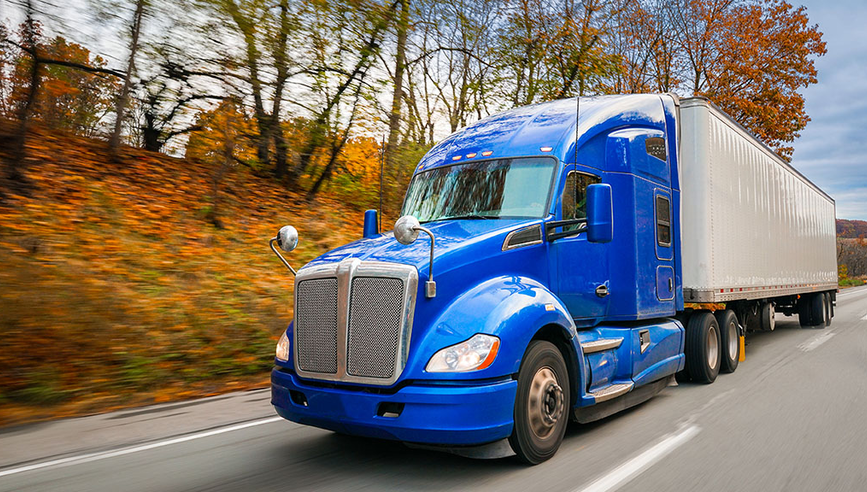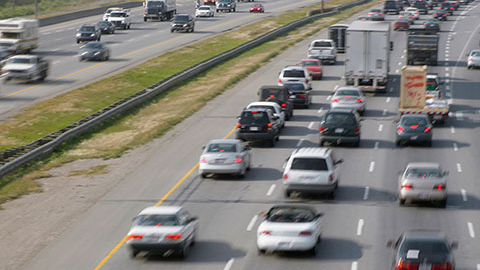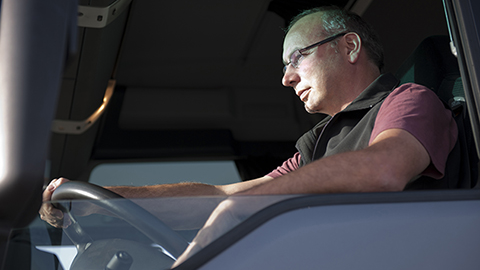5 Tips to Help Prevent Rear-End Collisions in Trucking


Rear-end collisions are the most common of all motor vehicle crashes. Data shows that rear-end collisions are responsible for more than 7% of all traffic-related fatalities with almost 20% of those fatalities involving two-vehicle collisions.1
As significant in damage and loss as rear-end collisions can be, there are strategies that can help truck drivers reduce the risk of being involved in a rear-end crash.
It’s important to understand why rear-end collisions occur. Then learn how to take preventive measures to reduce the risk – and the potential costs – of rear-end collisions.
Why rear-end collisions are so common
Safe driving today requires more attention than ever before. Congested areas and construction zones require careful navigation. Drivers also have more distractions. These include mobile phones, eating and drinking behind the wheel and infotainment systems. Even dashboard controls and in-cab communication devices can be disruptive. The evidence is clear: Distracted driving is dangerous. It is a significant contributor to the thousands of deaths on U.S. roadways every month.
With such sobering facts, it’s critical to understand that even a minor distraction that takes a truck driver’s eyes off the road could result in a rear-end collision with a vehicle in front of them.
Speeding, aggressive driving, following too closely and blind spots – which are risks for anyone on the road – put a truck driver at an even greater risk of rear-end collisions. A truck can take longer to stop than a car, with potential stopping distance increasing with the size and weight of the truck and its cargo. That’s why truck drivers must give themselves plenty of margin for error to prevent the need for a hard stop and mitigate a potential accident.
5 ways to help prevent rear-end collisions
These five strategies can assist you in lowering your risk of rear-end collisions:
1. Encourage advanced planning
Drivers who plan their routes may be better able to focus on their driving. They can also anticipate trouble spots on the road and take proactive measures to cut potential hazards or avoid them altogether.
Many states offer 511 traffic hotlines, websites and downloadable apps to inform drivers of real-time accidents, delays, construction zones and congestion. Other helpful tools include navigation apps that estimate travel time, warn of traffic conditions and suggest alternate routes. Not all resources are designed for trucks, so make sure any system you use provides navigation tips for commercial vehicles.
As convenient as these services are, they can also be a major distraction to drivers. Be sure to instruct your drivers to find a safe, off-road place to park before checking directions, using a mobile phone or interacting with a GPS device designed for trucks that alerts drivers to potential hazards such as low bridges, dangerous roads and restricted routes.
2. Invest in collision-avoidance technology
Truck manufacturers offer advanced safety systems to help minimize the risk and severity of trucking accidents. Some examples include:
- Rear-end collision warning systems that alert drivers to impending obstacles.
- Systems that warn of lane departures and vehicles in the driver’s blind spot.
- Systems that use smart cruise control to help maintain a safe following distance.
- Systems that apply automatic brakes if a collision is imminent.
Other technologies include rearview cameras that help prevent backing-up crashes and GPS systems that can even alert drivers of stop signs.
These safety technologies have led to significantly lower crash rates, according to the Partnership for Analytics Research in Traffic Safety. Forward collision-warning systems plus automatic braking are particularly effective.
3. Use telematics
While used to check vehicle location and travel time, telematics systems produce valuable insights into driving behavior, including at-risk speeding, hard braking and phone distraction. You can use this data to reward safe drivers and to offer coaching and safety incentives to those whose performance needs improvement. This can translate to fewer accidents and reduced costs for your business.
4. Install onboard cameras
Forward-facing and driver-facing cameras can provide invaluable information in the event of an incident such as a rear-end collision.
This data may help potentially exonerate the driver and your company when defending costly claims or lawsuits. To get drivers on board, clearly communicate your purpose for adopting the technology. Tell them how you’ll use it and how it can benefit them.
5. Provide regular safety communication
Provide mandatory safety training for all new employees and conduct an annual refresher for current employees, too. Stress the importance of avoiding distractions and maintaining a safe following distance. Remind them about driving at a safe speed and taking a break when drowsy or fatigued. Also review safe parking and other safety practices. Use insights from your telematics and video programs to offer coaching. Whenever critical events occur, provide appropriate counseling.
Work with an experienced insurance carrier
Northland Insurance® brings over 75 years of experience to trucking safety. We offer truck risk-control services, consulting and driving safety materials to help reduce your risk of rear-end collisions. In the event of a loss, our Claim professionals have specialized, in-depth knowledge of transportation claims. They'll help you get back on the road as soon as possible.
Talk with a Northland agent today to learn more.
Source
1NHTSA Traffic Safety Facts Annual Report, Table 29, Crashes by First Harmful Event, Manner of Collision, and Crash Severity, 2020, Updated June 24, 2022.




